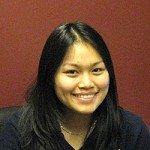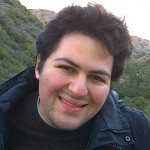Every year, several science agencies work together to select a group of graduate students from around the world to convene for several days of meetings in Lindau, Germany, with all the living Nobel Laureates in their field. The discipline changes from year to year, and this year’s meetings, held from June 30 to July 5, will focus on chemistry, with 35 Nobel laureates and 625 students in attendance.
Among the students chosen to attend the 63rd Lindau Meeting of Nobel Laureates this summer will be three Stanford chemistry graduate students: DAPHNE CHE, STEPHEN FRIED and DIANE WU. Stanford Nobel laureates STEVEN CHU (physics, 1997) and BRIAN KOBILKA (chemistry, 2012) also are scheduled to attend.
Che is a fourth-year graduate student in physical chemistry who works in Assistant Professor BIANXIAO CUI’s group, investigating the mechanism of axonal transport in neurons using fluorescence microscopy. Axonal transport is a fundamental and complex process linked to neurological disorders such as Alzheimer’s disease, amyotrophic lateral sclerosis (ALS) and Parkinson’s disease. A deeper understanding of the axonal transport mechanism could lead to the prevention and cure of neurodegenerative diseases.
Fried is a chemistry PhD candidate in the biophysical lab of Professor STEVEN BOXER. His research aims to understand what physically goes on inside an enzyme and figure out how it catalyzes chemical reactions at such mind-boggling speed. This could lead to a better understanding of what makes life possible at a molecular level, and inform how one might go about designing novel enzymes that carry out new biological functions. The latter will likely have significant consequences for medicine and the environment in the future.
Wu is a third-year PhD student studying new materials for solar cells with Assistant Professor JENNIFER DIONNE and Associate Professor ALBERTO SALLEO, both of the Materials Science and Engineering Department. Photovoltaic cells can only collect light that is above a certain minimum threshold energy; any light below that threshold passes through the cell and is “wasted.” Wu is currently working on constructing a back electrode that will absorb this so-called below-band gap light, upconvert it to useful energy and then scatter this light back into the active layer of a solar cell. She also is interested in the synthesis of novel upconverters for photovoltaic applications.
—BJORN CAREY


